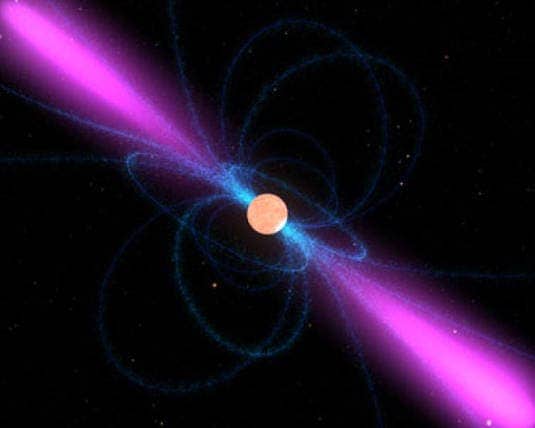Scientists have observed a massive burst of radio waves, helping them narrow down the potential sources of these huge bursts of energy. These events, also called blitzars, last about a millisecond but give off as much energy as the sun does in a million years.
These are quite possibly the most interesting and shocking sources of energy in the Universe. It’s not clear how they form, and the best theory is that blitzars start when a spinning neutron star with a big mass starts to collapse. The necessary condition is that the star is spinning very fast. Over a few million years, the pulsar’s strong magnetic field radiates energy away and slows its spin. Eventually the weakening centrifugal force is no longer able to stop the pulsar from its transformation into a black hole. At this moment of blitzar formation, part of the pulsar’s magnetic field outside the black hole is suddenly cut off from its vanished source – and this is where the burst starts.
A total of nine blitzars have been reported since the first was discovered in 2007, but none of them were captured “live” – all of them were found by looking through older data. Now, astronomers have finally surprised such an event in the act using the Parkes Telescope.
“This is a major breakthrough,” says Duncan Lorimer of West Virginia University in Morgantown, who was part of the team that discovered the first fast radio burst.
Within only a few hours, other telescopes also tuned in to see the blitzar, but none of them observed any afterglow – which is a neat finding in itself, Emily Petroff of Swinburne University in Melbourne, Australia said. This observation also revealed a new, interesting property – the waves appear to be circularly polarised rather than linearly polarised. This means that they don’t vibrate in a single plane, but in two.
“It’s something nobody has ever measured before,” Petroff says. But it’s hard to know how to interpret it, she says.
So far, while this is very exciting data, scientists are still not clear what conclusions to draw. Keith Bannister from Australia’s national science agency in Sydney said:
“Nobody knows what to make of it,” he says. “All the ideas are very exotic so ruling them out is all you can do at the moment.”
Journal reference: Monthly Notices of the Royal Astronomical Society, accepted, arxiv.org/abs/1412.0342










